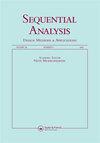无缝I/II期临床试验中的患者特异性剂量发现
IF 0.6
4区 数学
Q4 STATISTICS & PROBABILITY
Sequential Analysis-Design Methods and Applications
Pub Date : 2022-09-13
DOI:10.1080/07474946.2022.2105361
引用次数: 0
摘要
本文采用协变量来确定无缝I/II期临床试验的最佳剂量。假设二元协变量及其相互作用使方法简单。假设每个患者的预后为三项式,并采用延续比模型对剂量-反应数据进行建模。贝叶斯方法估计剂量-反应模型的参数。研究了八种可能的剂量反应情景,以检验所提出的方法。一项模拟研究表明,协变量考虑可以在适当的时候增强对最佳剂量的识别。本文章由计算机程序翻译,如有差异,请以英文原文为准。
Patient-specific dose finding in seamless phase I/II clinical trials
Abstract This article incorporates a covariate to determine the optimum dose in a seamless phase I/II clinical trial. A binary covariate and its interaction effect are assumed to keep the method simple. Each patient’s outcome is assumed to be trinomial, and the continuation ratio model is utilized to model the dose–response data. The Bayesian approach estimates parameters of the dose–response model. Eight plausible dose–response scenarios are investigated to check the proposed methodology. A simulation study shows that covariate consideration can enhance the identification of the optimum dose when it is appropriate to do.
求助全文
通过发布文献求助,成功后即可免费获取论文全文。
去求助
来源期刊

Sequential Analysis-Design Methods and Applications
STATISTICS & PROBABILITY-
CiteScore
1.40
自引率
12.50%
发文量
20
期刊介绍:
The purpose of Sequential Analysis is to contribute to theoretical and applied aspects of sequential methodologies in all areas of statistical science. Published papers highlight the development of new and important sequential approaches.
Interdisciplinary articles that emphasize the methodology of practical value to applied researchers and statistical consultants are highly encouraged. Papers that cover contemporary areas of applications including animal abundance, bioequivalence, communication science, computer simulations, data mining, directional data, disease mapping, environmental sampling, genome, imaging, microarrays, networking, parallel processing, pest management, sonar detection, spatial statistics, tracking, and engineering are deemed especially important. Of particular value are expository review articles that critically synthesize broad-based statistical issues. Papers on case-studies are also considered. All papers are refereed.
 求助内容:
求助内容: 应助结果提醒方式:
应助结果提醒方式:


